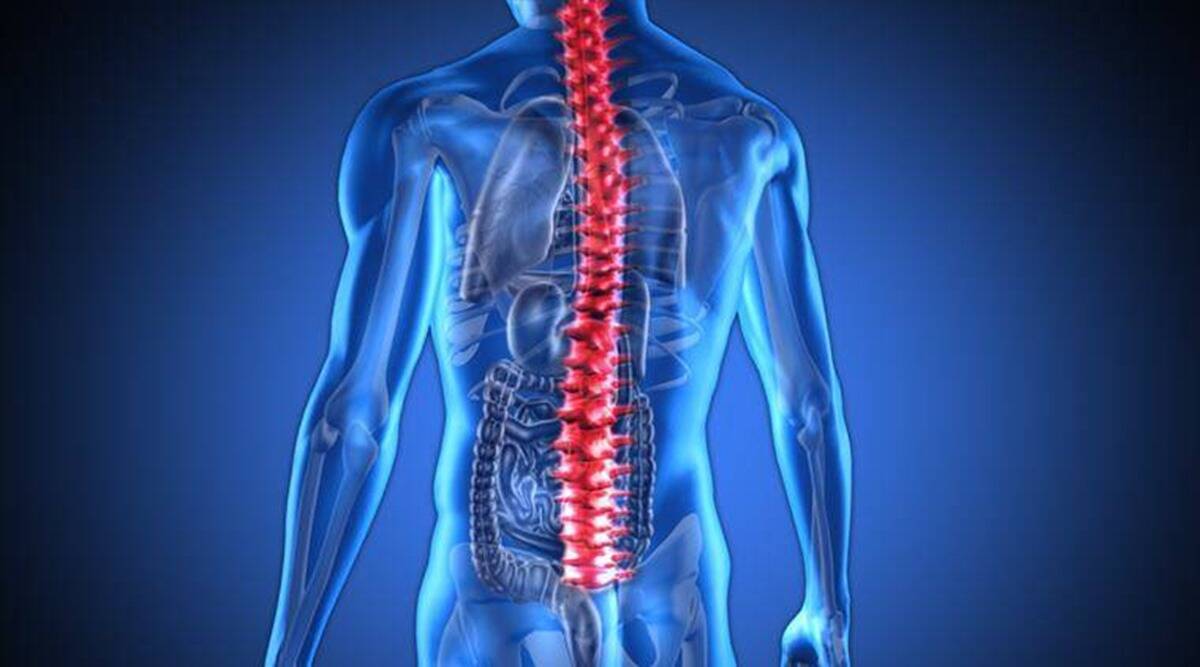Discs are structures present in the spine. Small and round in structure, these are soft on the inside and have hard shell –called annulus– on the outside that protects the nucleus inside of the structure. Discs flank the vertebrae, acting as shock absorber so that any sudden or sharp motion does not jolt them.
What is herniated disc?
Herniated disc is a painful state that results when the nucleus pushes out, and juts painfully against the annulus. It may also then tear and damage the outer shell. Due to the narrow spinal canal, the displaced fragment of the disc then pushes against the nerve, causing pain.
Even though herniated discs are more common in the lower back, and the region around the neck, the problem can virtually strike anywhere across the spinal cord. The symptoms of the condition are then contingent on where exactly the problem occurred.

When the herniation does not press on the nerve of the very few lucky people, there is little to no backache. However, when the nerve is compressed, it results in weakness, numbness and pain that then has people rushing to their Neuro Surgeon in Lahore.
Moreover, when the pain is in the lumbar spine, then the disc can press on the nerves that then contributes to the sciatic nerve. Since this nerve runs all the way down through the legs, when this occurs, pain wracks the entire side of the lower body.
The herniation can also be in the cervical spine, that then compresses on the nerve that runs through the neck to the arms. Thus, in that case, the upper one side of the body throbs.
Pain itself is not a pleasant experience, let along that pain which spreads over significant portion of the body, impeding not just comfort, but mobility and daily tasks as well. Thus, getting treatment for herniated discs is a vital step.
Treatment options for herniated disc
There are several factors that need to be considered for the treatment of the herniated disc, but it is mainly divided into two broad categories: non-surgical and surgical.
Non-Surgical treatments
Doctors initially prescribe conservative treatment for herniated discs. These include:
Rest
Taking a break can be very helpful for pain relief. It is also the effective strategy for coping with herniation that causes leg ache as well. The break that you give your body eases in the recovery.
Therefore, take some time off from strenuous and physically demanding activities. Take a break off from exercise and try not to work around the house. Your doctor may even ask you to take complete bed rest for 1-2 days.
During rest, try using hot and cold packs to your back. If you do not have the pack, you can use the primitive methods of wrapping ice in dishtowel or using hot water bottle.
When you are taking rest, be mindful of few factors. As much as rest helps, getting too much of bed rest is not good for you. Try then to get off the bed after a while. While rest is good for recovering, but still try to do some movement as being sedentary for too long is not good for your either. So, take little breaks in between. Also, do not bend or lift during this time.
Reorient your daily activity log so that your back is allowed to rest.
Physical Therapy
A professional physiotherapist can give you exercises that strengthen your back and the core muscles. Experts also know how to tackle the problem of herniated disc with exercise, which is much better than trying to do exercises yourself. They can be counterproductive and even dangerous!
A physical therapy session may also include ice and heat treatment, ultrasound therapy, massage, electrical muscle stimulation to help with pain relief and rehabilitation of the back.
Medicines
There are over-the-counter painkillers that help in mitigating the pain. Acetaminophen, ibuprofen, naproxen sodium are all effective for herniated disc treatment. They also help in bringing the swelling down in the area.
However, exercise caution when using high-strength painkillers, especially NSAID. They can cause gastritis, or ulceration in the stomach. Moreover, they also increase the chance of heart problems and bleeding.
In case people have muscular spams, they can also be prescribed muscle relaxants. Nerve pain medication including amitriptyline, duloxetine, gabapentin etc. are also used for treating nerve pain.
Injections
Cortisone, or steroid injections, are amongst the conservative treatment options available to people. Steroids are injected in the area around the nerves. The precise location is determined by imaging techniques.
Injections help in curbing the swelling, and thus, the pain. They also facilitate in the movement.
Surgery
Whereas most people start to feel better 4-6 weeks into the problem, others still do not recover from the herniation issues. In such cases, patients are generally recommended to get their surgery done.
Surgery is also considered when people experience bladder and bowel issues, have symptoms that aggravate rather than improving, and people cannot walk or stand properly.
There are different surgical options available to the patient,
Diskectomy
In this procedure, surgeon removes the part of the herniate disk that presses on the nerve. The procedure can be done via laparoscopy or via incision in the back or the neck.
Patients then also may need to have a lumbar laminotomy. It involves removing the lamina from the spine, that eases pressure off the nerve, and thus, alleviates the pain. It can be done with the diskectomy or can be performed separately.
Sometimes, a follow up surgery, known as spinal fusion, may also be performed. It involves fusing two disks together to help mitigate the pain.
Artificial Disk Surgery
AD surgery is only effective for certain disks in the lower back. It involves taking the disk and replacing with one made of metal or plastic. Other benefits include stability in the spine and ease in mobility. However, you need to consult your Neuro Surgeon in Islamabad first, as this option is not feasible for everyone.

